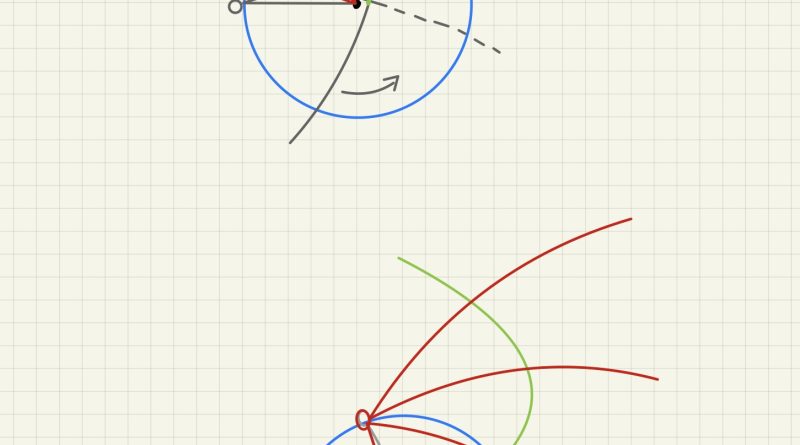Casting Angles Based on Shoulder Lean
Referencing the picture on our left, lets look at an athlete dropping onto a trampoline and they dropped from directly above the center of the tramp. If they drop in the center, and the trampoline lies on flat ground, the rebound angle will be straight back up. If an athlete drops onto the center of a trampoline that is slanted, when the athlete hits the middle and compresses the springs and tramp bed, the rebound angle will send them bouncing off and away from the trampoline. The same such physics would apply with our casting assuming the athlete has straight arms and we don’t overcomplicate with every variation of body position and mistake possible. Keep it simple! If the athlete leans over and creates an angle with their shoulders to hips that would be close to horizontal, then if the athlete decompresses their body shape and stops at near flat like they should, the hips will naturally move up in a path from the bar that would be close to perpendicular the angle of the shoulders to hips. Naturally this means that at the end of the kip, there should be more compression to get the shoulders as close to horizontal as possible to begin the casting action.
Hip Path Towards Handstand
Check out the green lines on both of the pictures to the left. This line would signify the basic path of the hips that occurs based on the lean of the shoulders and angle away from horizontal at the completion of the kip and beginning of the cast. This of course assumes that the arms are straight and that the athlete doesn’t do an excessive arch to vary this model in some odd and complex ways. As you can see, the basic path of the hips (green line) on the top picture is close to vertical or straight up towards the handstand. As the hips rise, for each degree the hips lift the shoulders should open the same amount. This will create a beautiful unfolding of the body with balance towards the handstand. The green line on the second drawing takes a curved and loopy route to the handstand. Because of the exit angle of the hips from the bar, the athlete has to be incredibly patient in stopping the shoulders and not pressing towards the handstand until the hips travel quite far from the bar and get well overhead. It is way harder to stop the hips when they do this big looping arc towards vertical. Most athletes can’t be patient enough and the hips going away from the bar short of vertical creates some need to bend the arms and try to arch themselves over the bar. Many problems come from this starting cast angle.
Pausing the Shoulders Through the Decompression Process
When the body is in its deepest compression at the finish of the kip and the beginning of the cast, there is a loaded potential energy from that compressed position. The goal here is to anchor the shoulders in place (pausing them or arresting their motion) to maximize the kick and ensure the best quality direction of energy from the bar. The goal is to create as much vertical energy with the hips as possible. When the athlete unloads the compression from the hips and shoulders at the same time, the exit angle of the hips changes and sends the hips and center of mass back away from the bar. The key is to keep the shoulders paused in place until the finish of the uncoil to a tight “straight” position or hip flat position. Straight being a relative term in gymnastics as your chest will ideally remain hollow with your core engaged, etc. Watch the video for an easy demonstration of how this looks in simple form.

